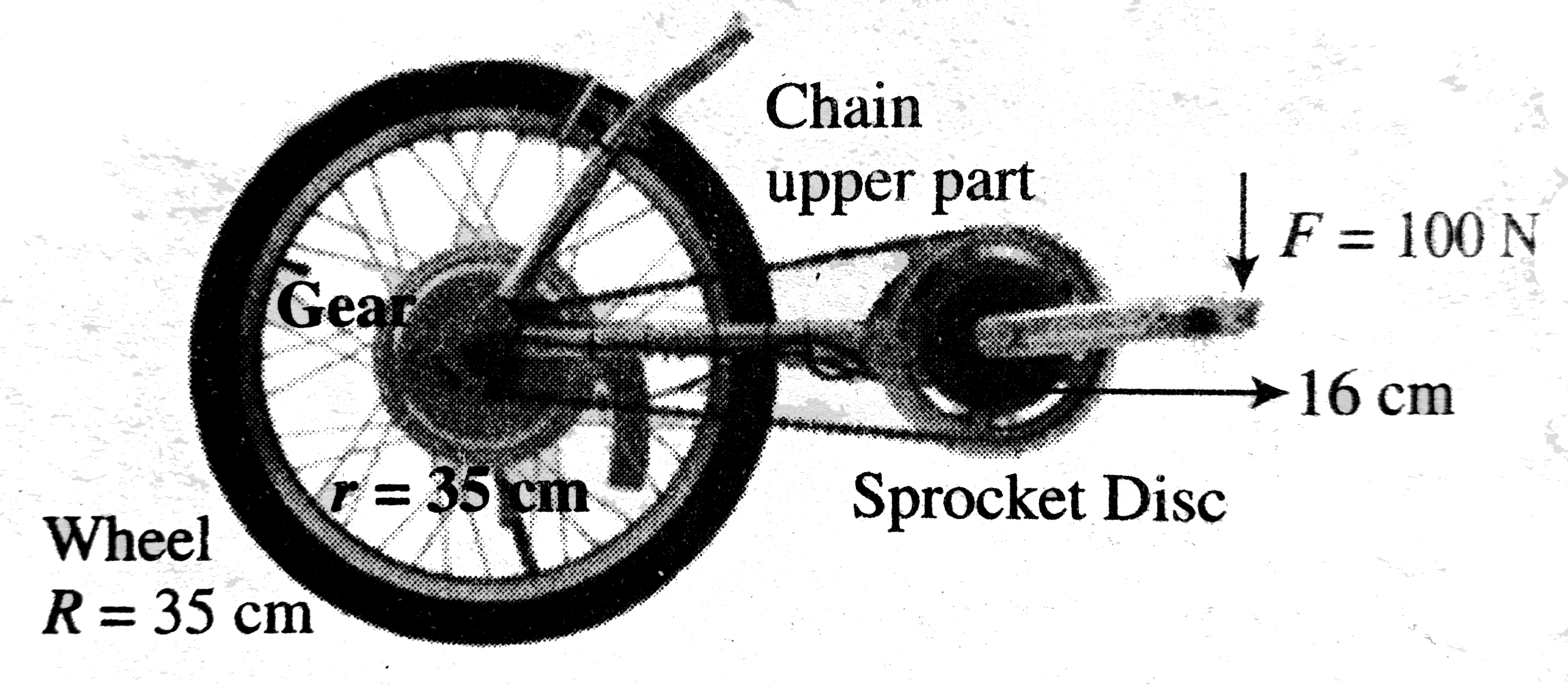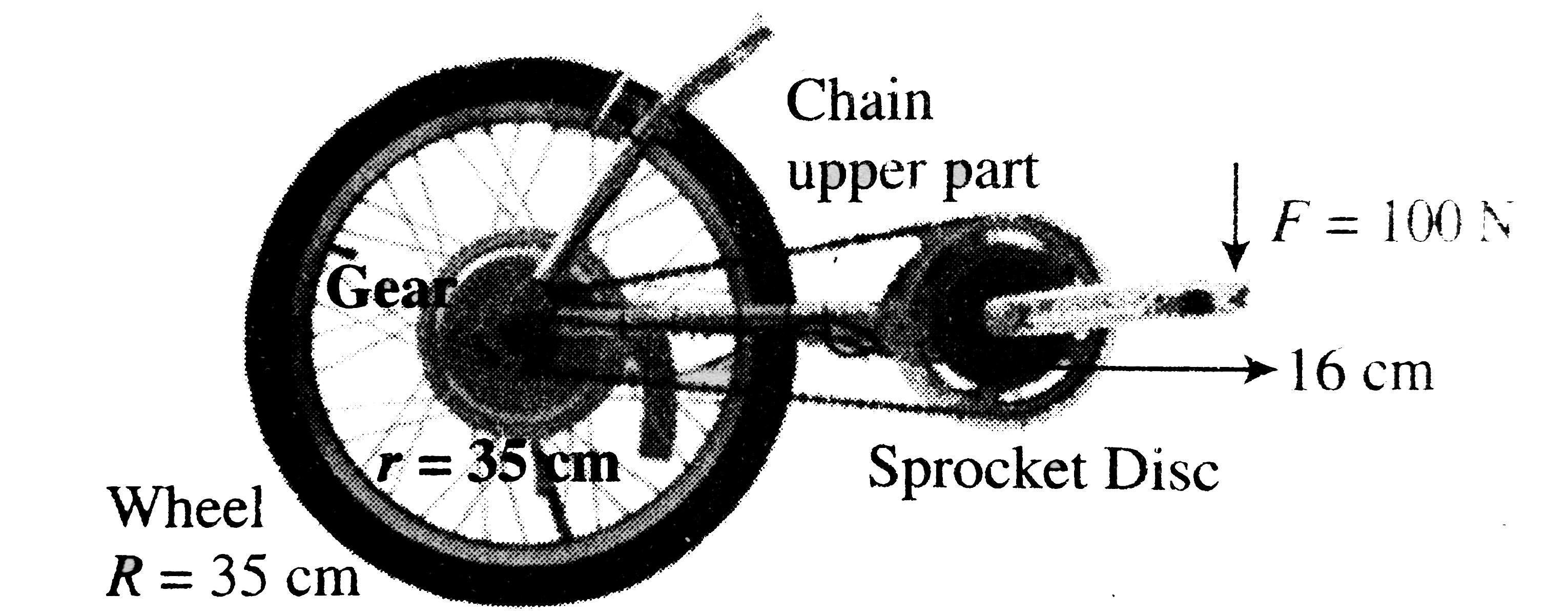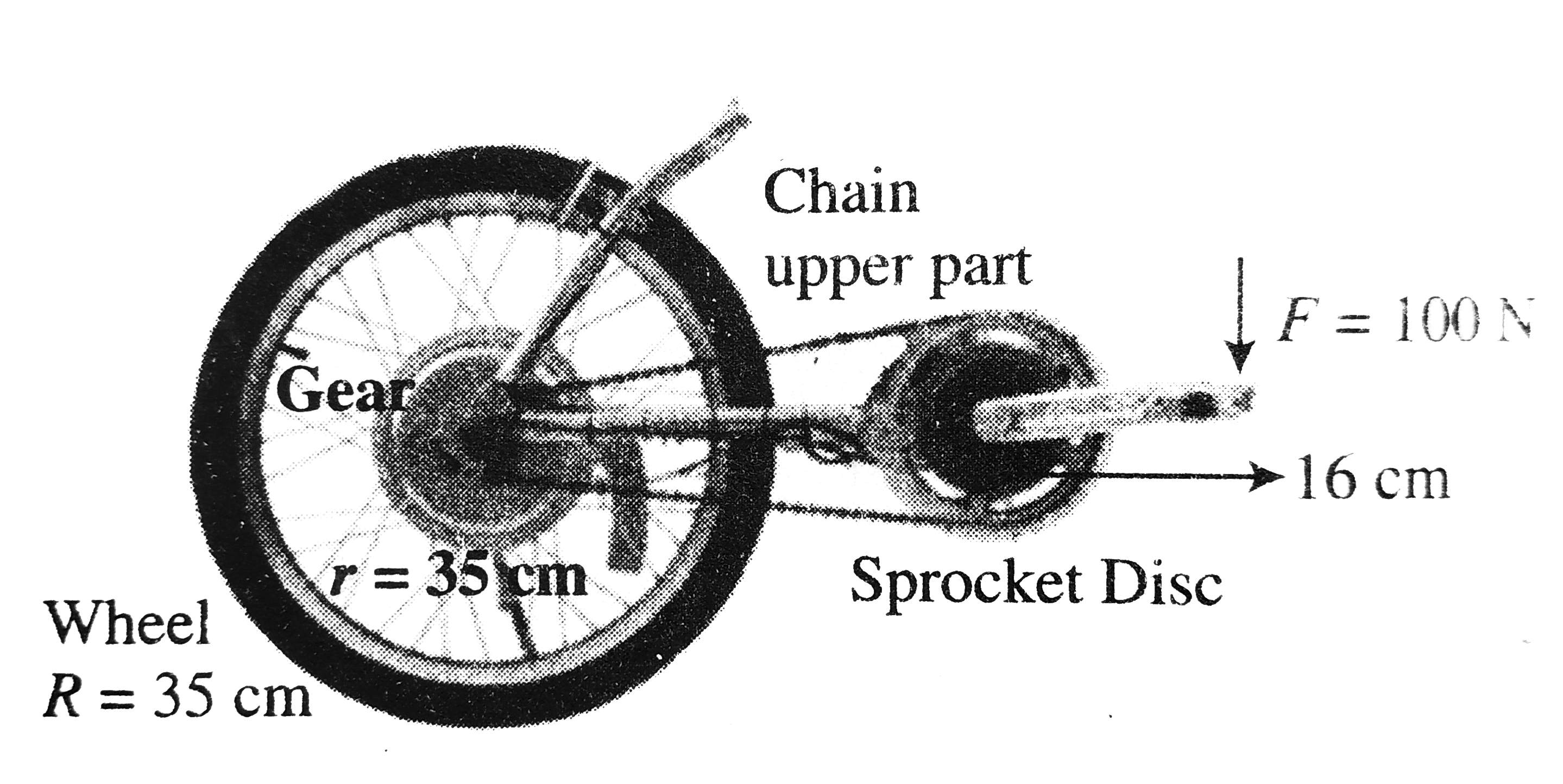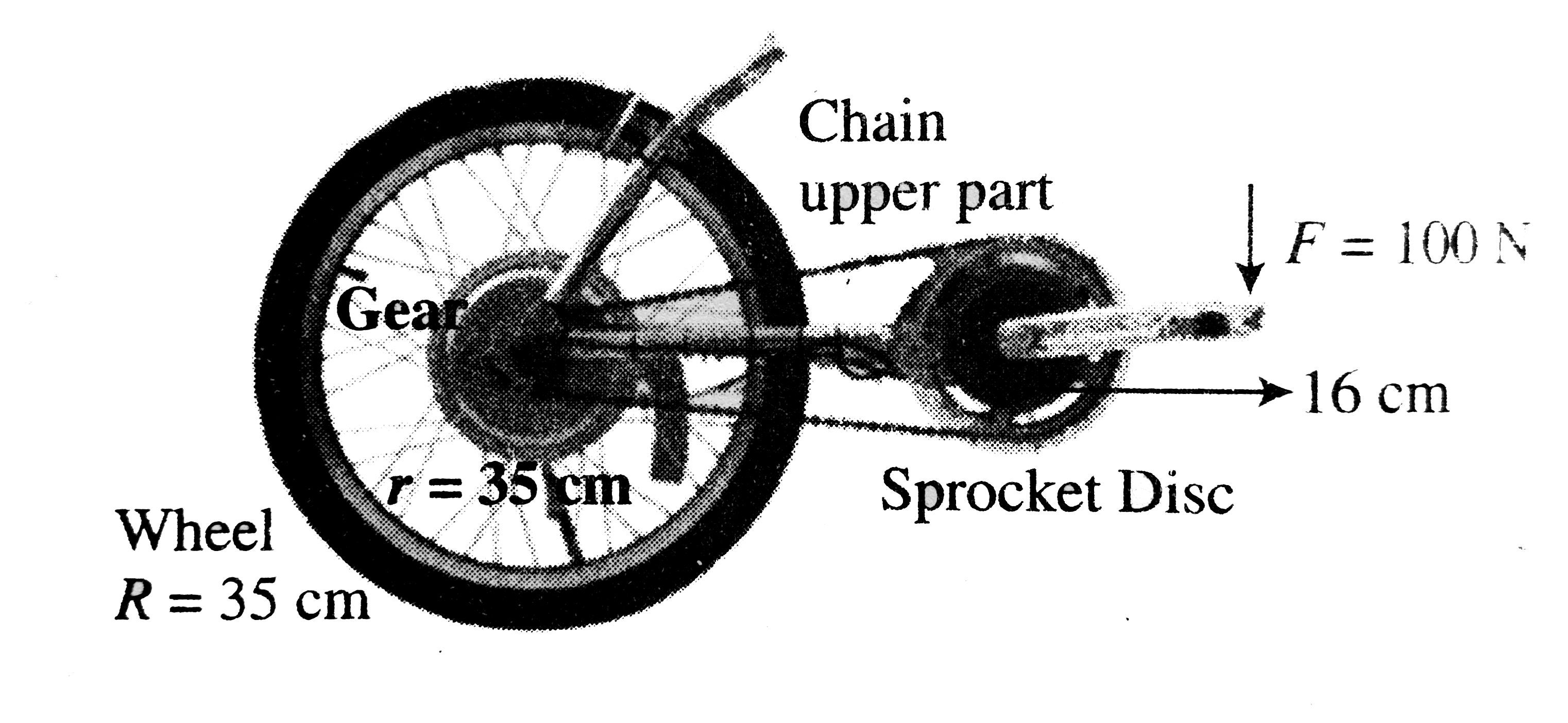A bicycle has pedal rods of length 16cm connected to sprocketed disc of radius 10cm. The bicycle wheels are 70cm in diameter and the chain runs over a gear of radius 4cm. The speed of the cycle is constant and the cyclist applies 100N for, that is always perpendicular to the pedal rod, as shown in figure. Assume tension in the lower part of chain is negligible. The cyclist is peddling at a constant rate of two revolutions per second. Assume that the force applied by other foot is zero when one foot is exerting 100N force. Neglect friction within cycle parts and the rolling friction.

Net torque on the rear wheel of the bicycle is equal to
zero
16Nm
6.4N−m
4.8N−m
The correct Answer is:A
As angular acceleration of the rear wheel is zero therefore net torque on the wheel is zero.
Topper's Solved these Questions
- BOOK - CENGAGE PHYSICSCHAPTER - RIGID BODY DYNAMICS 1EXERCISE - Integer11videos
RIGID BODY DYNAMICS 1
- BOOK - CENGAGE PHYSICSCHAPTER - RIGID BODY DYNAMICS 1EXERCISE - Multiple Correct9videos
RIGID BODY DYNAMICS 1
- BOOK - CENGAGE PHYSICSCHAPTER - PROPERTIES OF SOLIDS AND FLUIDSEXERCISE - INTEGER_TYPE2videos
PROPERTIES OF SOLIDS AND FLUIDS
- BOOK - CENGAGE PHYSICSCHAPTER - RIGID BODY DYNAMICS 2EXERCISE - Interger2videos
RIGID BODY DYNAMICS 2
Similar Questions
A wheel of a bicycle has inner diameter 50 cm and thickness 10 cm. What is the speed of the bicycle if it makes 10 revolutions in 5 seconds?
View SolutionThaddeus is riding his bicycle. The speed of the bicycle decreases as he stops pedaling it. The speed of the bicycle decreases because of
View Solution
Knowledge Check
- Question 1 - Select One
A bicycle has pedal rods of length 16cm connected to sprocketed disc of radius 10cm. The bicycle wheels are 70cm in diameter and the chain runs over a gear of radius 4cm. The speed of the cycle is constant and the cyclist applies 100N for, that is always perpendicular to the pedal rod, as shown in figure. Assume tension in the lower part of chain is negligible. The cyclist is peddling at a constant rate of two revolutions per second. Assume that the force applied by other foot is zero when one foot is exerting 100N force. Neglect friction within cycle parts and the rolling friction.

The speed of the bicycle isA6.4πms−1B3.5πms−1C2.8πms−1D6.5πms−1 - Question 2 - Select One
A bicycle has pedal rods of length 16cm connected to sprocketed disc of radius 10cm. The bicycle wheels are 70cm in diameter and the chain runs over a gear of radius 4cm. The speed of the cycle is constant and the cyclist applies 100N for, that is always perpendicular to the pedal rod, as shown in figure. Assume tension in the lower part of chain is negligible. The cyclist is peddling at a constant rate of two revolutions per second. Assume that the force applied by other foot is zero when one foot is exerting 100N force. Neglect friction within cycle parts and the rolling friction.

The tension in the upper portion of the chain is equal toA100NB120NC160ND240N - Question 3 - Select One
A bicycle has pedal rods of length 16cm connected to sprocketed disc of radius 10cm. The bicycle wheels are 70cm in diameter and the chain runs over a gear of radius 4cm. The speed of the cycle is constant and the cyclist applies 100N for, that is always perpendicular to the pedal rod, as shown in figure. Assume tension in the lower part of chain is negligible. The cyclist is peddling at a constant rate of two revolutions per second. Assume that the force applied by other foot is zero when one foot is exerting 100N force. Neglect friction within cycle parts and the rolling friction.

The net force of the friction on the rear wheel due to the road is:A100NB62NC32.6ND18.3N
A boy is cycling such that the wheels of the cycle are making 140 revolutions per minute. If the radius of the wheel is 30 cm, the speed of the cycle is
View SolutionA bicycle has pedal rods of length 16cm connected to sprocketed disc of radius 10cm. The bicycle wheels are 70cm in diameter and the chain runs over a gear of radius 4cm. The speed of the cycle is constant and the cyclist applies 100N for, that is always perpendicular to the pedal rod, as shown in figure. Assume tension in the lower part of chain is negligible. The cyclist is peddling at a constant rate of two revolutions per second. Assume that the force applied by other foot is zero when one foot is exerting 100N force. Neglect friction within cycle parts and the rolling friction.

The power delivered by the cyclist is equal toView SolutionA bicycle wheel makes 5000 revolutions in moving 11km. Then the radius of the wheel (in cm) is
View SolutionWhen we stops pedalling a bicycle we are riding, the bicycle beigns to slow. This is because
View SolutionThe radius of the wheel of a vehicle is 70 cm. The wheel makes 10 revolutions in 5 seconds. The speed of the vehicle is (a) 29.46 km/hr (b) 31.68 km/hr (c) 32.72 km/hr (d) 36.25 km/hr
View Solution

